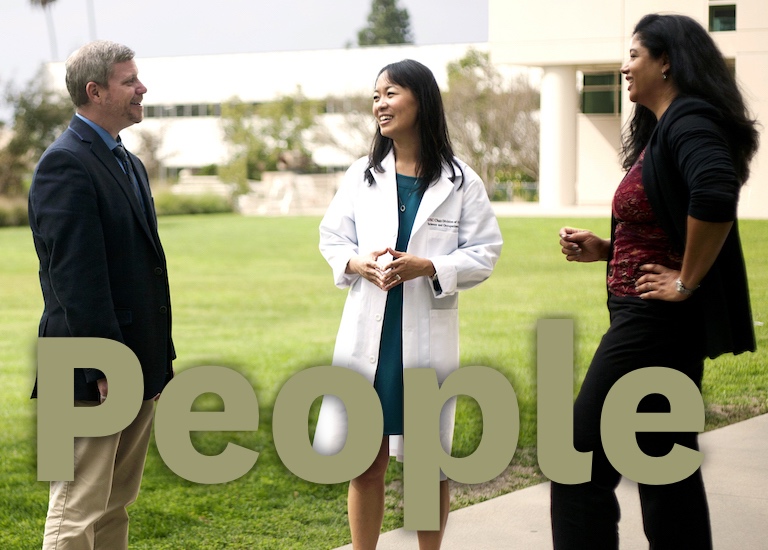Student Blog
What are OS/OT?
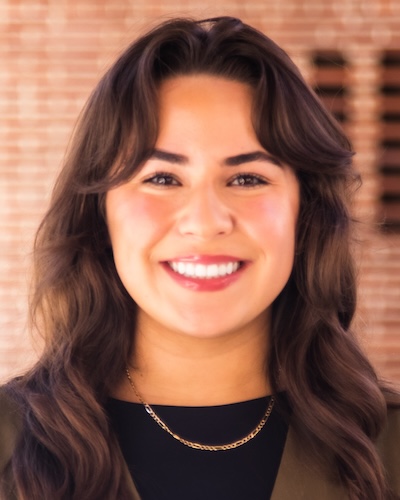
My Summer at a Play-Based Sensory Integration Clinic ⟩
September 27, 2024, by Kimberly Rochin
What are OS/OT?
This summer, I had the chance to be a camp counselor at Play 2 Progress (P2P), a sensory integration clinic that uses play as its core. As someone who’s all about pediatrics, this experience wasn’t just another job — it was eye-opening. I got to see how powerful play can be in helping kids grow and learn.
Every day at camp was buzzing with energy. The sounds of laughter, excitement, and even frustration filled the air as the kids worked through different challenges. Even though I’ve worked with kids before, P2P was different. Instead of just giving directions, I learned how to empower kids by letting them take control. With sensory processing in mind, I started to find ways for them to use their senses to better understand their behavior and choices. One of my favorite parts of the summer was watching the kids tackle sensory-rich games. These games weren’t just fun — they helped with balance, coordination, and fine motor skills. We turned obstacle courses into mini-adventures, art into sensory experiences, and group games into lessons in teamwork and patience. It was amazing to watch the kids grow more confident with each challenge they faced.
But what stuck with me were the differences between the three, four, and five-year-olds. Even though their ages were close, their attention spans and social skills were worlds apart. That taught me that you can’t expect every child to engage the same way. Each kid has their own developmental pace, and it’s important to meet them where they are to truly support their growth.
While I did come home sometimes covered in slime or my pants splattered with paint, this experience was worth every messy moment, leaving me with unforgettable memories and a deeper passion for helping kids through play.
If you have any questions or would like to learn more about my experience, please do not hesitate to reach out.
Till next time!
⋯
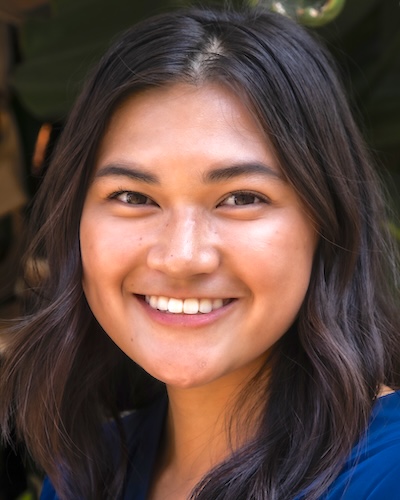
More than Observation: Insights from My Shadowing Experiences ⟩
September 26, 2024, by Cara
What are OS/OT?
In preparation for applying to OT school, I was intimidated by the requirement of 80 observation hours. How could I accumulate that much experience in just one summer? Luckily, with a little networking through family friends and help from Google, I shadowed across three different settings: inpatient (acute care), school-based, and outpatient. Each experience not only exposed me to the field but taught me the importance of learning with an open mind.
Starting with inpatient (acute care), I explored a variety of specialties, from ICU to neurology, burns, orthopedics, pediatrics, cardiac, and trauma. The focus is to help the patient get better and decide where they go next, whether it’s home, a nursing facility, or daily rehab. As patients recovered from heart surgery, spinal injuries, strokes, work-related injuries, neurological trauma, or burns, the OTs addressed bedside mobility, dressing, personal hygiene, range of motion, and consciousness. They assessed how well the patient could do the above without assistance.
While I had always thought I would end up in pediatrics, my visit to the burn unit sparked a newfound interest. Seeing such severe injuries is not for the faint of heart, but there’s something about the strength and progress of the patients that drew me in. I felt more challenged because of the complexities of the burns and the intricacies that come with treating them. Moreover, the reliance on visual aids, such as the burn itself and images of post-surgery skin grafts provided greater insight into a patient’s range of motion, independence, and pressure tolerance than written notes. As a visual learner, this resonated with me.
Moving onto school-based OT, I observed high-functioning students as OTs focused on improving fine motor skills like handwriting, pencil grasp, and line spacing. It was interesting to see differences in letter formation and recognition; some reversed letters or wrote from bottom to top. I also couldn’t help but notice a fisted grasp pattern among the students, and that I, too, grip my pencil incorrectly instead of the proper tripod grasp. Furthermore, I learned standardized tests like the Beery VMI and Bot-2, which determine eligibility for OT. These included activities like drawing, comparing shapes, and transferring or sorting objects to assess visual and motor skills. I got to test these on myself, in which I discovered that I needed to improve my manual dexterity.
Finally, in an outpatient setting, I got to be a little kid again, recognizing how play can help make learning fun. Here, OTs used play-based interventions to improve kids’ independence and achieve their goals. Equipment included a rock wall, hammock, and interactive games. At first glance, it seems like this is just a setting to let loose. But, play-based therapy addresses skills like problem-solving, fine motor, bilateral coordination, and self-control. For example, I learned that playing on a scooter can strengthen the core, playing with slime helps with sensory integration, and using tweezers to sort colors develops the pincer grip needed to hold a pencil or utensil.
From the hospital, classroom, and indoor playground, each experience has made me realize all the ways I can make a difference as an OT. Maybe you’re someone who already has their heart set on a certain specialty. Still, I encourage you to explore the many faces of OT. You might discover new interests, identify skills that need improvement, or even realize that you could use some OT as well!
⋯
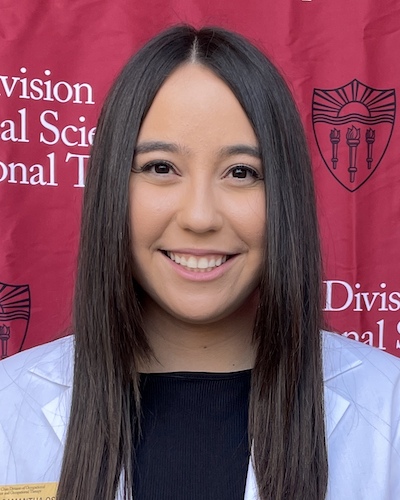
A Love Letter to OT ⟩
February 6, 2024, by Samantha
What are OS/OT?
With February upon us, love is in the air and, as a bit of a hopeless romantic myself, I’ve been taking time to reflect on the things I love, including OT. Growing up, my parents always encouraged me to pursue my dreams and find a career that I was passionate about. My dad would say, “Sam, if you’re doing something you love, you’ll never work a day in your life.” Although I have yet to fully immerse myself in practice, every time I participate in fieldwork and envision the future I’m creating for myself in school, I’m confident that I love OT in the same way my dad describes loving his career. Upon reflection, here are some of the many reasons I fell in love with the profession of occupational therapy:
Playing with a Purpose: As a sophomore in high school, I was introduced to occupational therapy when my cousin, Tori, was born with Down Syndrome. In efforts to support my family and learn more about pediatric healthcare professions, I joined Tori at many of her PT, OT, and speech therapy sessions. It was here that I began to recognize the value of play as a means of therapeutic intervention. Whether it was running around on an obstacle course to work on balance and motor planning or swinging on a bolster swing to receive vestibular input, Tori was having fun while simultaneously strengthening skills that would be applicable to other facets of her life. Through my observations in this OT clinic, I fell in love with the concept of playing with a purpose and knew I could see myself making a difference in children’s lives in this manner for the rest of my life.
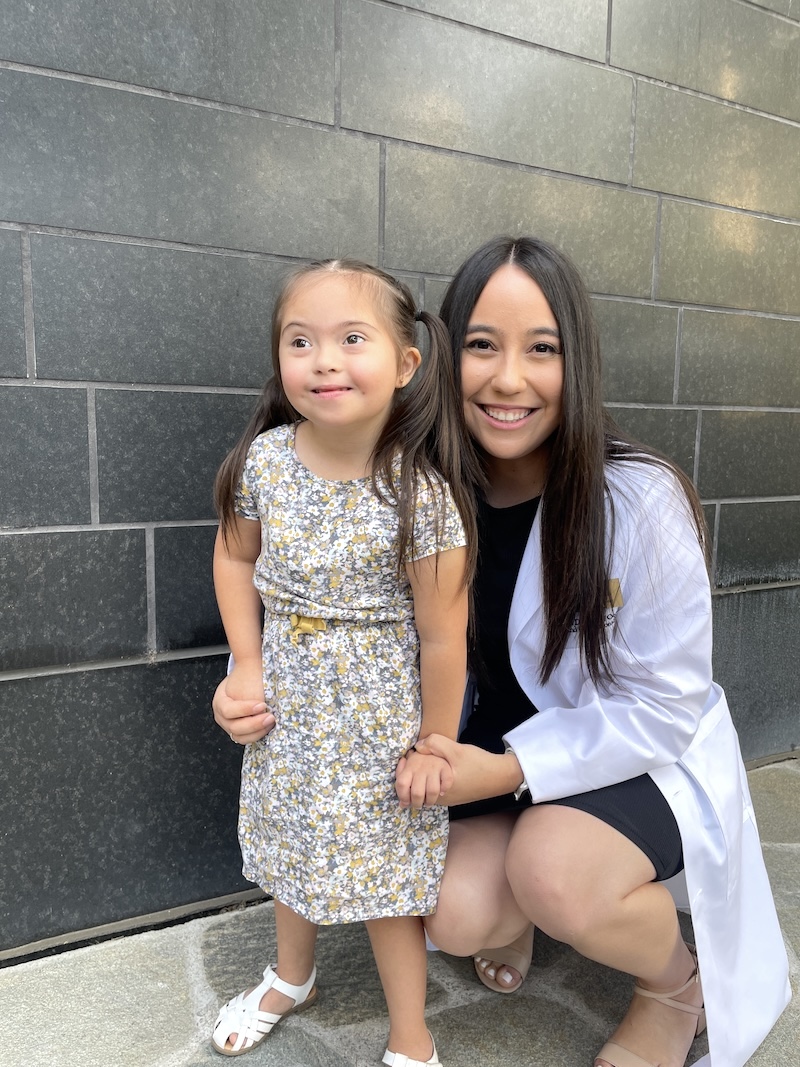
Me and Tori at my White Coat Ceremony in 2022!
Flexibility in Practice Areas: Like many, I arrived at OT school with my heart set on pediatrics. As I began my first immersion, I was placed at an outpatient hand therapy clinic for fieldwork and became enamored with the complexities and inner workings of the hand and wrist. Internally, I began having a bit of an identity crisis, as I was unsure of the definitive path I wanted to pursue. However, my perspective shifted when I recognized the flexibility within the field of OT. Although certain settings require advanced practice, there’s a beauty to the inherent flexibility that this profession offers. OT practitioners have the freedom to navigate through various practice areas at different points in their lives. For instance, starting an entry-level position in acute care doesn’t confine someone to that setting forever. If this same individual desires to start a family or becomes the primary caregiver of a loved one later in life, transitioning seamlessly to a more suitable practice area without returning to school is a viable option. Ultimately, I love that the dynamic nature & flexibility of occupational therapy not only promotes the practitioners’ ability to enhance the lives of others, but also empowers them to pursue a career that aligns with their evolving personal and professional aspirations.
Applications of Creativity: As a creative person who enjoys crafting and making music, I love having the opportunity to integrate these aspects of my own life into professional practice. In our Creativity, Craft, and Activity Analysis course, we explored different creative modalities that can be used to enhance interventions with clients. From collaging a vision board to promote self-awareness and identity to making a pumpkin out of construction paper to practice cutting with scissors, the possibilities are endless. The creative process allows people to explore and express themselves in ways that traditional interventions might not achieve, therefore being creative in my personal life informs my practice. Although this application can be challenging at times, I find it exciting to be able to integrate occupations I enjoy in my profession.
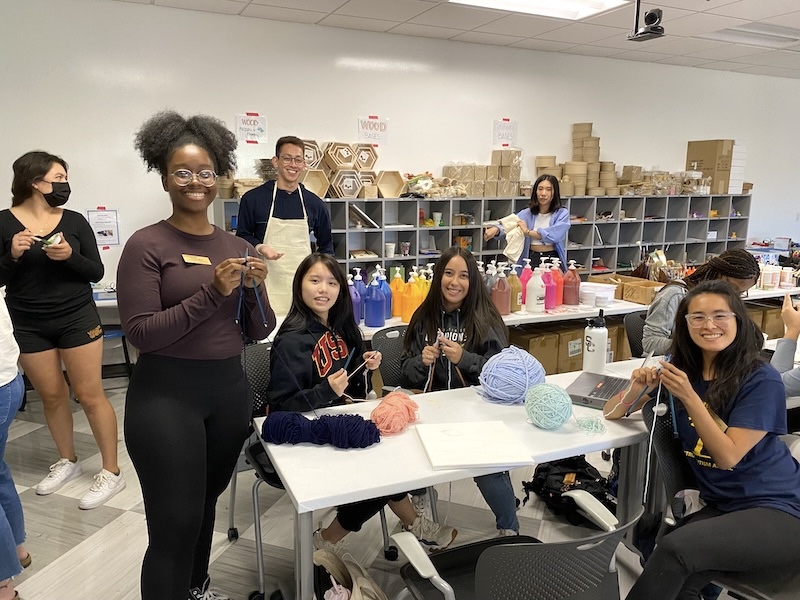
Me and my classmates knitting in the Creativity, Craft, and Activity Analysis course
Though everyone’s occupational therapy journey is different, I hope that my experience and love for the profession helps you appreciate it & ponder the reasons you’re pursuing this career too.
⋯
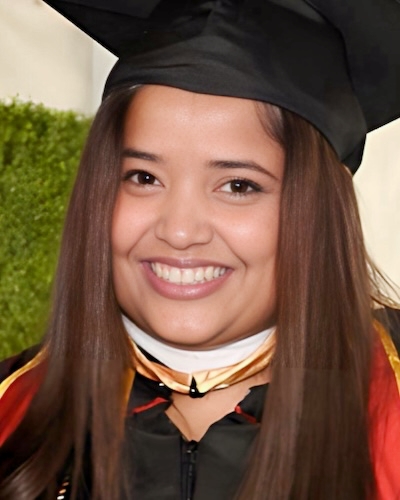
From Curiosity to Commitment: A 7-Year Quest to Unveil the Essence of OT ⟩
February 5, 2024, by Sheryl
International What are OS/OT?
As I introspect upon my journey as a pedagogy resident and doctoral student in the Post-Professional OTD program here at Chan, I reignite my glowing passion for occupational therapy and hope to do so for you.
Despite creating so many elevator pitches summarizing an answer to the question ‘So, what is Occupational Therapy?’ I still struggle doing that question justice. Among many stories that contributed to choosing my path to becoming an OT was the story of a younger version of me yet to discover occupational therapy.
It was at the age of 17 in high school where I would first hear about Occupational Therapy. One of my electives in high school created an opportunity to observe a Special Education School. It was here where I would continue to meet the most resilient and brilliant children whose diagnosis did not hinder their potential and a team of teachers and physical therapists working effortlessly to create a safe space for them to flourish. There was a need for OTs that echoed in those corridors that I notice now, and after a very invigorating experience, I proceeded to request to meet with one of the physical therapists at the school. She spoke to me about this famously untapped potential of Occupational Therapy and the very growing need for OTs. That was the conversation that brought me to my very first ‘So, what is occupational therapy?’ which would then go on to launch my dream of becoming an occupational therapist.
As my vague goals shaped into specific inquiries, my curiosity became insatiable. After extensive research about Occupational Therapy, I began to comprehend how this field was truly radical.
That day, this younger version of me in my home in Riyadh, Saudi Arabia would go on to make a road map of my life with a list of OT schools all around the world with the only intention to learn the most so that she could answer her first burning ‘So, what is occupational therapy?’ I remember sticking that piece of paper on the mirror of my dresser.
It has since been 7+ years of OT school, 7 World OT days, 3 degrees in Occupational Therapy and an unquenched thirst to fathom the true power of occupational therapy and repeatedly answer that same question passionately.
After graduating from the Post Professional Master’s (PP-MA) program at USC, my inquisitive mind continued to implore me to gather knowledge about academia, the curriculum and understanding the potentiality of Occupational Science and Occupational Therapy. I hope to contribute to the lineage of excellence at the Division and propagate the importance of Occupational Therapy as a Post-Professional OTD student here at USC Chan. This remains my driving force as I add another pit stop on the road map I created 7 years ago.
⋯
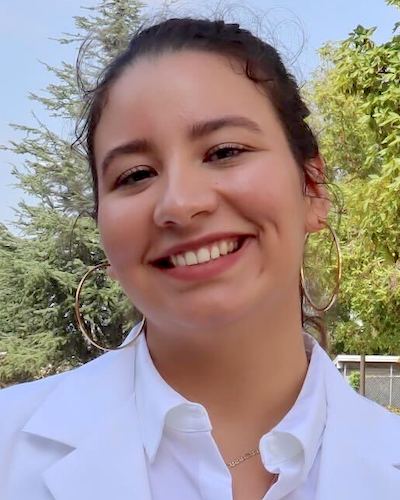
OT Didn’t Choose Me, I Chose OT ⟩
January 19, 2024, by Natalie
First-Gen What are OS/OT?
Now this isn’t one of those admirable stories where the storyteller explains how occupational therapy has always been a part of their life — in fact, I did not know OT existed almost until the end of my undergraduate career. This story is one about unexpected chances [coincidences instead of unexpected chances?] and for that, I am forever grateful.
From a very early age, I was taught the importance of higher education and encouraged to know what career path I wanted to take. For the longest time, I saw myself pursuing medical school to become a pediatrician, until I also saw myself as a firefighter, a police officer, a lawyer, a teacher . . . the list goes on. I was coming up towards the end of my junior year of college when I felt the impending need to decide what I wanted to do for the rest of my life. *cue the internal panic*
At the time, I was taking a course titled “Psychology of Aging” and one of our assignments was to find and research a profession that works closely with older adults. I completed my assignment, talking about how cool art therapy sounds. I was so excited to have found a potential career path that would allow me to help people through art. My partner then recommended I speak to his sister, who “probably has experience with art therapy but I think also does a whole bunch of other cool things with her clients as an occupational therapist?. . .” I was so curious to learn more about this “occupational therapy” so I spoke to his sister and she shared all her knowledge and experiences with me. And the rest is history from there . . . (just kidding, is it ever that easy?)
As I learned more and more about OT and what it is, what it looks like, and how broad the profession is, I felt both thrilled and confused. There was so much to learn (which still applies now), and the more I searched, the more I found. The best part of this process — and most telling — was that every time I learned something new, I felt further captivated by OT. I soon realized that this is THE profession for me — it gives endless possibilities for what populations and practice settings I can work with/in and blends my interests for art and science well.
Additionally, despite all of the information I found about the profession when I went digging for it, I was baffled to discover how widely unknown OT is. It seemed as if having a personal experience with OT was the only way people knew about it. I mean, I only learned about it by chance. I quickly realized this lack of recognition of the field meant underserved populations likely have limited-to-no access to the types of services occupational therapy can provide, and that didn’t sit well with me. Because of this, I decided I wanted to pursue a career in OT where I can work within those underserved communities and hopefully serve as an advocate for both my clients and the profession.
⋯





